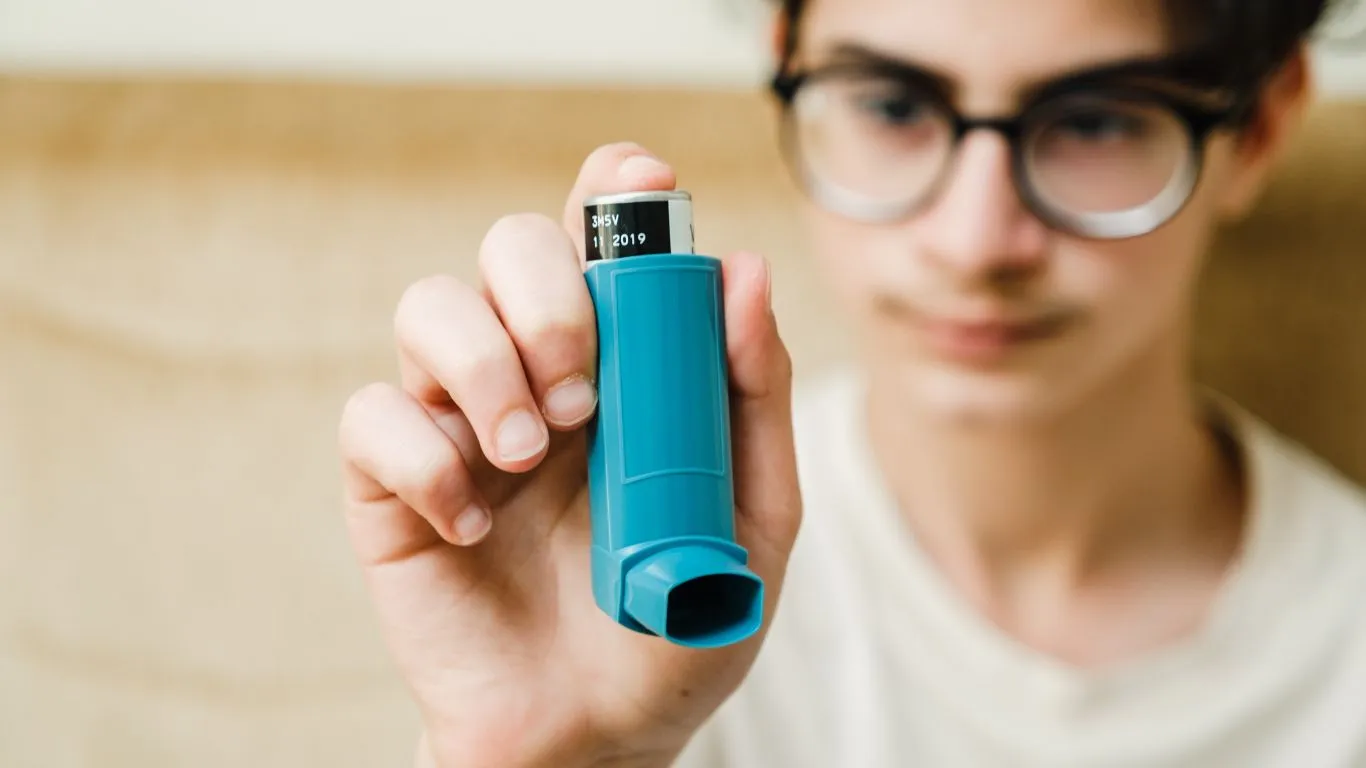Worst Indoor Plants for Asthma: What to Avoid for Easier Breathing
When people think of indoor plants, they usually picture something lush and green adding a peaceful vibe to the room. But if you or someone in your home has asthma, it’s not always that simple. Trust me, as a pulmonary nurse practitioner, I’ve seen way too many cases where a person thought they were doing something healthy by decorating with houseplants—only to end up wheezing, coughing, and struggling to breathe. That’s why it’s so important to know about the best indoor plants to avoid for asthma. It might sound counterintuitive, but not all greenery is good for your lungs, especially when you’ve got reactive airways. Let’s dig into which plants could be quietly wreaking havoc on your respiratory system.
Why Indoor Plants Can Be a Hidden Asthma Trigger

Most folks are shocked when I tell them that their favorite houseplant might be behind their sudden asthma flare-ups. The truth is, some plants release spores, pollen, or even volatile organic compounds (VOCs) that can irritate your lungs. As someone who’s worked closely with asthma patients for years, I can’t count how many times I’ve seen symptoms improve just by removing a specific plant from someone’s living space.
It’s not just about pollen—some plants grow mold in their soil or collect dust on their leaves, both of which are big-time asthma triggers. And it’s not always the plants themselves either. Sometimes it’s how we care for them: overwatering, poor ventilation, and lack of sunlight can create the perfect storm for mold growth and airborne allergens.
Common Culprits Lurking in Plain Sight
Let’s be honest. We’ve all bought a plant just because it looked cute in the store. But here are a few popular ones that might be silently making your asthma worse:
- Ficus (Weeping Fig) – This one’s a biggie. The ficus plant is notorious for releasing airborne allergens that can cause sneezing, wheezing, and even trigger asthma attacks in sensitive individuals. I had a patient who loved hers until she ended up in urgent care after a nasty flare-up.
- Peace Lily – Beautiful? Yes. Asthma-friendly? Not really. These plants can grow mold in their soil if overwatered, and that mold can easily become airborne.
- English Ivy – Often marketed as a natural air purifier, but if you’ve got asthma, steer clear. It produces airborne particles that can irritate your lungs and eyes.
- Areca Palm – It’s lush and tropical-looking, but the fine dust it accumulates, combined with VOC emissions, makes it less than ideal for asthma sufferers.
My Personal Experience: The Asthma-Flare Fern
A few years back, one of my asthma patients came in with a string of bad attacks that didn’t quite make sense. No major weather changes, no new pets, no dust mite issues. But when I asked about her home environment, she mentioned proudly displaying a Boston Fern in her kitchen window. Ding ding ding! Those ferns might look harmless, but they love moist soil—a breeding ground for mold. Within two weeks of removing it, her peak flows improved significantly. It’s stories like these that stick with me and fuel my mission to educate folks on the best indoor plants to avoid for asthma.
Signs Your Indoor Plant Is Making You Sick

Most people don’t immediately connect their asthma symptoms with their plants, but here are a few red flags to watch out for:
- Frequent wheezing or shortness of breath that seems worse at home.
- Persistent coughing, especially near where the plant is located.
- Itchy eyes or throat while watering or pruning your plants.
- Noticeable mold growth on the soil or the pot.
- Dust buildup on leaves—especially common with larger-leafed species like rubber plants or palms.
If any of these sound familiar, it might be time to re-evaluate your green friends. I’m not saying ditch all your plants—just be smart and strategic about the ones you bring into your home. There are definitely safer options out there, and we’ll get to those too. But for now, awareness is the first step.
Understanding Plant Allergens and VOCs

One of the most misunderstood parts of the asthma and indoor plant conversation is the role of VOCs—volatile organic compounds. These are chemicals released as gases from certain solids or liquids. Some houseplants emit VOCs naturally as part of their metabolic process, while others may release them from fertilizers or pesticides used in the soil. While they might be in small quantities, for someone with a sensitive respiratory system, even minor exposure can be enough to cause discomfort or flare-ups.
For instance, some people get headaches or feel lightheaded around certain plants and never connect the dots to VOC exposure. As a nurse practitioner, I always tell my patients: if your body is giving you signals, pay attention. Your lungs especially don’t lie.
How Plant Care Habits Can Influence Asthma Symptoms

It’s not just the type of plant that matters—how you care for it can make or break your respiratory health. I can’t stress this enough, especially after helping so many patients troubleshoot mysterious flare-ups that, at first, didn’t seem related to their plants at all. Turns out, our plant-parenting styles can accidentally make things worse for those of us dealing with asthma.
Take overwatering for example. A little extra water seems harmless, right? But soggy soil is the perfect environment for mold spores to grow—and guess where those spores end up? Yep, in the air you breathe. And trust me, mold spores are not your lungs’ best friends.
Common Care Mistakes That Can Worsen Asthma
- Overwatering – As mentioned, too much moisture = mold. I always recommend using pots with drainage holes and letting the top inch of soil dry out between waterings.
- Neglecting dust – Larger leafy plants like rubber trees or monsteras gather dust like nobody’s business. That buildup can trap allergens, so a gentle wipe-down every week really helps.
- Letting leaves decay – Old, rotting leaves attract bacteria and fungus. If you see brown or mushy foliage, trim it off ASAP.
- Using chemical-laden fertilizers or sprays – Some of these release VOCs that can seriously aggravate asthma. Stick with natural or organic alternatives if you can.
One of my asthma patients had a gorgeous ZZ plant that she swore she barely touched. But when we got into her care routine, turns out she’d been using a synthetic shine spray on the leaves—and the VOCs were off the charts. Once she ditched the spray and cleaned the plant with just water, her indoor breathing improved almost overnight.
Safe Alternatives: Asthma-Friendly Indoor Plants

Alright, so now that we’ve gone over the troublemakers, let’s get into the good stuff. You don’t have to live in a plant-free home to protect your lungs. There are some solid options out there that bring the green vibes without the wheeze-inducing side effects.
Here are a few of my favorite low-risk, asthma-friendly indoor plants that I often recommend to patients—yes, even the ones with severe asthma.
- Snake Plant (Sansevieria) – This tough little guy is known for its air-purifying qualities and is super low-maintenance. It doesn’t need frequent watering, so less chance of mold growth.
- Spider Plant – Another low-allergen champ. It helps remove pollutants like carbon monoxide and formaldehyde, plus it’s safe for pets.
- Aloe Vera – Bonus: it’s also useful for treating small burns or skin irritations. Keep it in a bright spot and let the soil dry out between watering.
- Pothos – Easy to care for and not known to release airborne irritants. Just keep it pruned and don’t overwater.
I actually keep a big ol’ snake plant in my own home office. Not only does it look nice, but it’s also one of the few plants that releases oxygen at night—great for clean nighttime breathing. I recommend these types all the time to patients who want to enjoy the calming aesthetic of plants without the respiratory baggage.
When to See a Specialist About Indoor Air Quality

If you’ve removed problematic plants, improved your care routines, and still find yourself gasping or coughing at home, it’s probably time to dig deeper. The truth is, indoor air quality can be affected by so many variables, from cleaning products to dust mites to your HVAC system. But don’t underestimate the role of seemingly innocent things like houseplants. They often fly under the radar.
From my experience in pulmonary care, patients who suspect their symptoms are being triggered at home should consider the following steps:
- Track your symptoms in a journal—note times, locations, and activities.
- Get your indoor air tested—there are simple kits or professional services available.
- Consult with a pulmonologist or allergist—especially if you’re already on asthma meds but not improving.
- Ask about allergen-specific testing—you might be reacting to a plant you never suspected.
I once worked with a teen patient who had been struggling with nightly asthma attacks for months. Turned out, his bedroom window was crowded with three different plants, including an overwatered fern and a ficus. Once those were removed and replaced with a snake plant, his nighttime wheezing literally stopped in two days. Small changes can make a big impact.
Remember, your lungs are always talking to you—you just have to listen. And if your indoor plants are sending them into distress mode, it’s time to make some swaps. Your breathing will thank you.
Final Thoughts on Choosing the Best Indoor Plants to Avoid for Asthma

Alright, so we’ve gone through the risky plants, the safer alternatives, and the habits that can either help or hurt your lungs. But if you’re still with me, it means you probably want to get this right—not just for the aesthetic, but for your health or the health of someone in your home. And that matters. As someone who’s spent years working with asthma patients, I can tell you this: you’d be surprised how often these little details—like a houseplant—make a huge difference.
What I often remind patients is this: our homes should be our safe zones. That means the air we breathe inside them should work for us, not against us. So when we’re talking about the best indoor plants to avoid for asthma, we’re really talking about creating an environment that supports our health and well-being.
Other Indoor Air Factors to Keep in Mind
- Humidity control – Asthma and high humidity do not mix well. Use a dehumidifier if needed to keep moisture levels in check.
- Air purifiers – A quality HEPA air purifier can trap pollen, mold spores, and even VOCs, giving your lungs some breathing room.
- Open windows strategically – A little fresh air is great, but during high pollen seasons, be cautious, especially if your plants are near windows.
- Proper ventilation in plant-heavy areas – Kitchens, bathrooms, or sunrooms with lots of greenery need airflow to avoid stagnant, allergen-heavy air.
I actually keep a compact air purifier in the same room where I have most of my plants. It’s a simple tweak, but one that’s helped both me and my patients feel more confident about bringing plants back into their living spaces safely.
Asthma-Friendly Plant Placement Tips

Even if you’ve picked the right plants, where you place them plays a huge role in how they affect your breathing. I’ve seen situations where the plant itself wasn’t the issue—it was sitting right next to a heat vent or on a dusty shelf, causing all kinds of airborne chaos.
Here are a few placement tips to help make your indoor garden more asthma-friendly:
- Avoid placing plants in bedrooms, especially near your pillow or headboard. You spend a lot of hours sleeping there, and even minor airborne irritants can cause chronic symptoms.
- Keep plants off the floor – Higher shelves or plant stands reduce exposure to dust stirred up by foot traffic and vacuums.
- Rotate and inspect regularly – Turn your plants occasionally to catch any signs of mold or pests on the less-visible sides.
- Never overcrowd your plants – Give each one space to breathe and allow for airflow between them.
I’ve got one snake plant near a hallway mirror where it catches some light but stays out of the way. No musty soil, no dust buildup—it’s a small, intentional placement that makes a big difference.
Should You Ditch All Your Plants If You Have Asthma?
No, and I say that both as a healthcare professional and someone who loves a good houseplant. But being informed is everything. The goal isn’t to live in a sterile box—it’s to create a home that nurtures both your style and your respiratory health. Choosing plants carefully, maintaining them properly, and staying mindful of your body’s signals can help you strike that balance.
And remember, what works for someone else might not work for you. I’ve had patients who react to even low-risk plants, and others who thrive with greenery all around. There’s no one-size-fits-all here—but there is room for personalization and safer choices.
References
- National Institutes of Health
- Health.com
- Centers for Disease Control and Prevention
- Asthma and Allergy Foundation of America
Disclaimer
This article is for informational purposes only and is not a substitute for professional medical advice, diagnosis, or treatment. Always seek advice from your physician or a qualified healthcare provider with any questions you may have regarding a medical condition. The views and experiences shared here are based on my personal background as a pulmonary nurse practitioner and should not replace individualized care.

Bianca Nala is a compassionate Nurse Practitioner with a strong background in primary and respiratory care. As a health writer for Healthusias.com, she combines her clinical expertise with a talent for clear, relatable storytelling to help readers better understand their health. Bianca focuses on topics like asthma, COPD, chronic cough, and overall lung health, aiming to simplify complex medical topics without losing accuracy. Whether she’s treating patients or writing articles, Bianca is driven by a single goal: making quality healthcare knowledge accessible to everyone.






